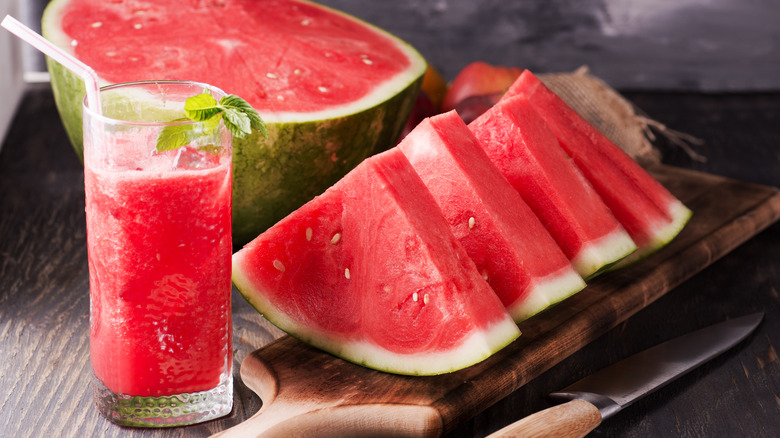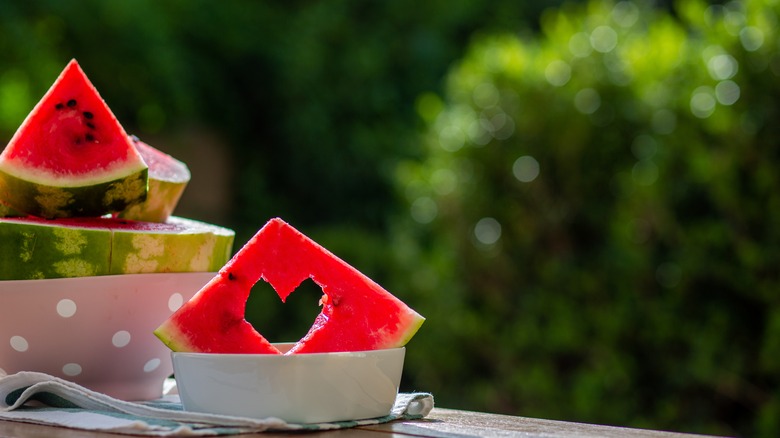Is It Dangerous To Eat Hollow Heart Watermelon?
There's almost nothing more satisfying than a cool bite of fresh watermelon in the warmer months. Whether it's sliced, part of a dish, juiced for a cocktail, or mixed in with other summer produce for a killer fruit salad, watermelon is a true summer dining favorite. And on top of its succulent, sweet taste, Healthline suggests that watermelon can improve heart health, boost hydration, deliver nutrients, and improve skin, among other things.
But what happens when you crack into a watermelon and find that it doesn't look normal? Sometimes, watermelon can develop what's called a hollow heart, which is when the interior of the melon forms cracks and hollow areas; according to Bayer, it's definitely strange and may cause you to question whether your precious fruit is safe to eat. Fortunately, hollow heart is a common issue with watermelon. And enough research has been done to reassure you that you need to charge forward with your summer picnic and backyard barbecue plans that feature the festive fruit.
Hollow heart watermelon is totally fine to eat
Researchers at the University of Delaware have found that hollow hearts are mainly caused by inadequate pollination — the lack of enough pollen from pollinizer plants and trouble getting the pollen from its origin to the watermelon. This can be caused by fluctuating temperatures and "higher frequency of storms early in the season," per Bayer. According to Watermelon.org, internally cracked watermelons are safe to eat and may even taste sweeter than a regular watermelon since the melon's sugars consolidate along the surface of the cracked flesh.
This may come as exciting news for those who love watermelon for its sweet, juicy flavor. Unfortunately, there doesn't seem to be much of a way to tell from the outside whether a watermelon will have a hollow heart. So those searching for watermelons with this particular affliction may just have to increase their intake until they find one.

